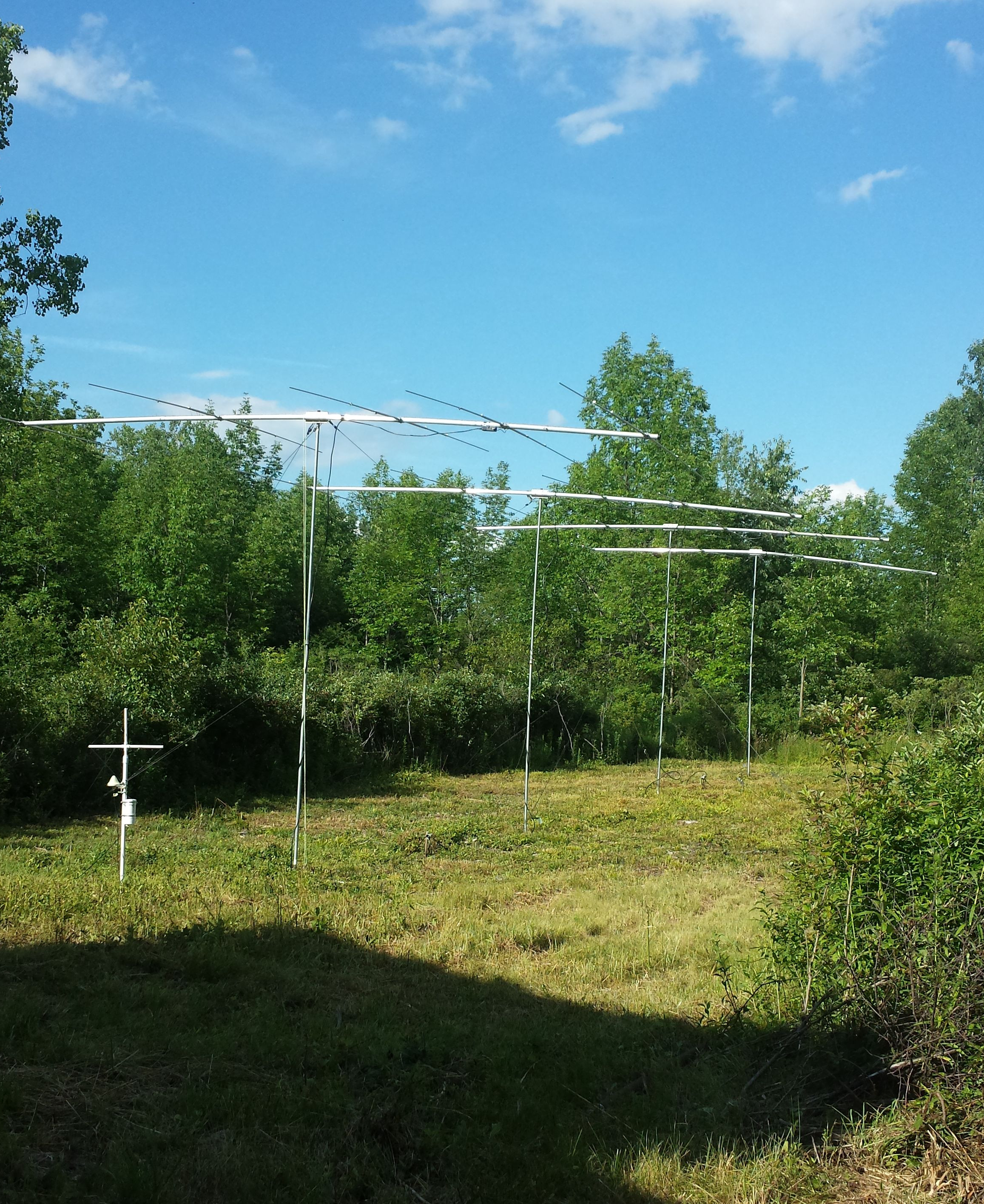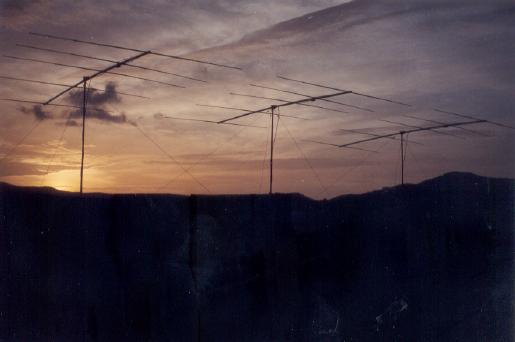Zeman Lab Radar
The Imaging Radar Interferometer at Zeman Laboratory is located on
the grounds of the Cornell Botanic Garden at a site once used for the
development of hardware destined for the Arecibo Radio Observatory in
Puerto Rico. The radar is used to observe meter-scale field-aligned
plasma density irregularities in the E region ionosphere over the
Great Lakes region. The irregularities inhabit so-called sporadic E
ionization layers made mainly from metallic ions. Similar
irregularities are observed widely at middle latitudes where they
occur in long bands spaced by tens of kilometers and propagating
predominately to the southwest in the northern hemisphere. The bands
are thought to be associated with neutral dynamic instability in the
mesosphere/ lower thermosphere although various plasma instabilities
may also be involved. Sporadic E layers and the attendant
irregularities also occur at higher latitudes approaching the
ionospheric trough but have received less attention until now.
The sporadic E-layer irregularities are connected
by magnetic field lines with F-region irregularities associated with
so-called midlatitude spread F. The field of view of the Zeman radar
is overlooked by the
Millstone Hill
Observatory in Westford, Massachusetts, which can detect
midlatitude spread F using incoherent scatter radar techniques. In
addition, a coherent scatter radar located in Clemson, South Carolina,
the twin of the Zeman radar, can detect F-region field-alligned
irregularities via coherent scatter. Together with other
instrumentation nearby, the radars will be used for a comprehensive
investigation of instabilities and irregularities at the edge of the
midlatitude ionosphere.
A key feature of the Zeman and
Clemson radars is their implementation of radar imaging
techniques. Radar imaging provides a volumetric view of the scatterers
under investigation. The images have a cadence of approximately once
every three seconds, a range resolution of 1.5 km, and an angular
resolution of approximately 0.5 degrees. Doppler spectra are imaged as
well. The radars provide unambiguous information about the spatial,
temporal, and dynamic structure of the underlying waves and
instabilities.


